Digs & Discoveries
Off the Grid
By MARLEY BROWN
Thursday, June 10, 2021
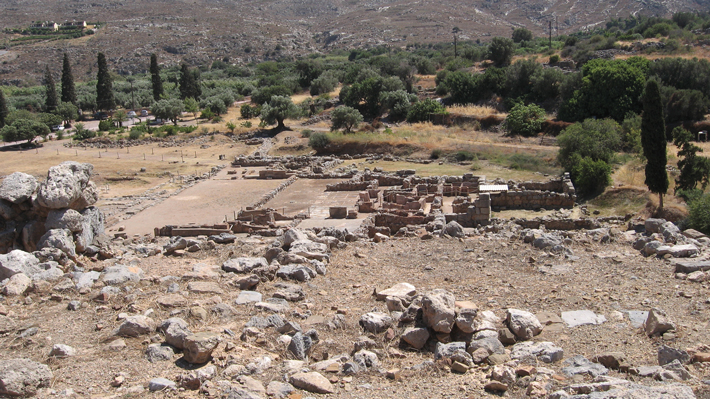
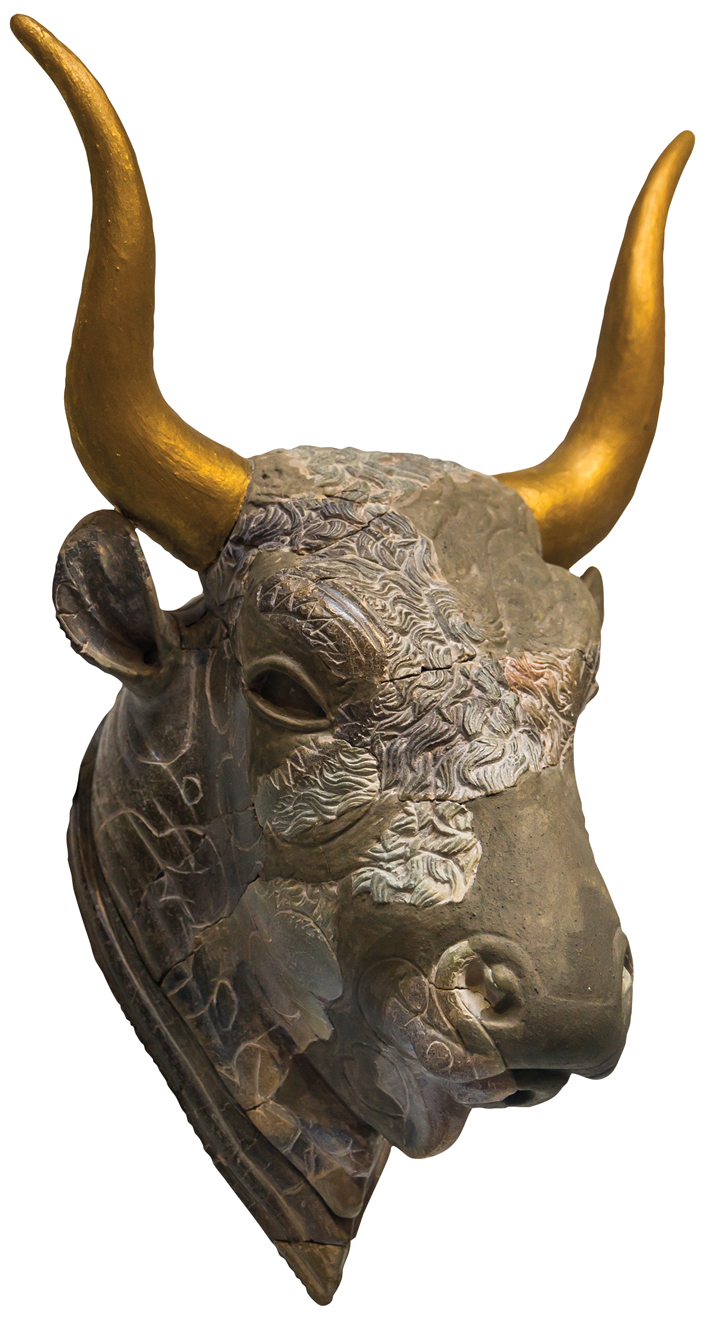 Some 3,500 years ago, at the mouth of a harbor on the far eastern end of Crete, a community of Minoan traders built a complex of banquet halls, storage rooms, kitchens, courtyards, and pools. This hub at the site of Zakros is known as a palace, but the term is somewhat of a misnomer both at Zakros and at other contemporaneous Minoan settlements. According to archaeologist D. Matthew Buell of Trent University, there is no evidence from any Minoan site to suggest that these palaces housed rulers or politicians. Instead, Buell says, they are better understood as multipurpose centers where all manner of commercial, political, religious, industrial, and social activities may have taken place. The Zakros palace covers just under an acre of land and featured some 150 rooms arranged on two levels around a central court. During excavations that have taken place intermittently since the 1960s, 13 tablets written in a script known as Linear A have been discovered there. Linear A has yet to be deciphered, but these texts are thought to contain some sort of tabulations, likely recording taxes or tribute.
Some 3,500 years ago, at the mouth of a harbor on the far eastern end of Crete, a community of Minoan traders built a complex of banquet halls, storage rooms, kitchens, courtyards, and pools. This hub at the site of Zakros is known as a palace, but the term is somewhat of a misnomer both at Zakros and at other contemporaneous Minoan settlements. According to archaeologist D. Matthew Buell of Trent University, there is no evidence from any Minoan site to suggest that these palaces housed rulers or politicians. Instead, Buell says, they are better understood as multipurpose centers where all manner of commercial, political, religious, industrial, and social activities may have taken place. The Zakros palace covers just under an acre of land and featured some 150 rooms arranged on two levels around a central court. During excavations that have taken place intermittently since the 1960s, 13 tablets written in a script known as Linear A have been discovered there. Linear A has yet to be deciphered, but these texts are thought to contain some sort of tabulations, likely recording taxes or tribute.
Researchers have uncovered little evidence of how Minoans organized themselves religiously and politically. However, architecture at sites including the palace at Zakros can provide some clues. “Minoans reserved spaces for elites,” says Buell, “but they also emphasized community interaction in large public areas as a means of social and political organization.” Zakros palace officials collected olive oil and other agricultural products in the hinterlands and stored them within the palace before redistributing them to the broader community during ceremonial events and shipping them out to trading partners across the sea. Buell believes the Minoan mariners of Zakros parlayed their eastern port location—the only safe refuge along a notoriously rough coast—into particularly strong commercial relationships with the Near East and North Africa. Zakros was destroyed around 1450 B.C., after which the palace was abandoned and never reoccupied. Archaeologists have found luxury goods that were left behind, including copper ingots from Cyprus, faience and alabaster from Egypt, ivory from Syria, and many rhytons, or pouring vessels made out of imported materials such as obsidian. One of these vessels was carved out of the mineral chlorite in the shape of a bull’s head, whose wooden horns were likely once wrapped in gold foil.
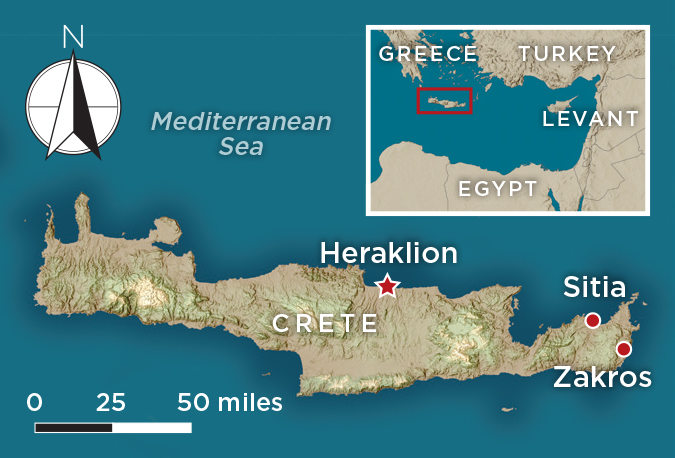 THE SITE
THE SITE
Many of the artifacts recovered from Zakros are in the Heraklion Archaeological Museum, which also provides an exhaustive introduction to Minoan civilization. Just outside Heraklion, at Knossos, visitors can take a guided tour of perhaps the most powerful Minoan settlement, which provides a framework for understanding some of the less well-explained ruins at Zakros. Rent a car in Heraklion, and drive east to Sitia, which boasts its own museum and excellent restaurants. There you can hire a local tour operator to drive you the hour or so down the coast to Zakros. Manual transmission aficionados who enjoy negotiating steep inclines and roads with no shoulder may prefer to drive themselves.
WHILE YOU'RE THERE
Some 20 miles up the coast from Zakros you’ll find Vai Beach, one of Crete’s most beloved spots to catch the island sun. The beach also features Europe’s largest natural palm forest.
Bathing at the Bar
By JASON URBANUS
Thursday, June 10, 2021
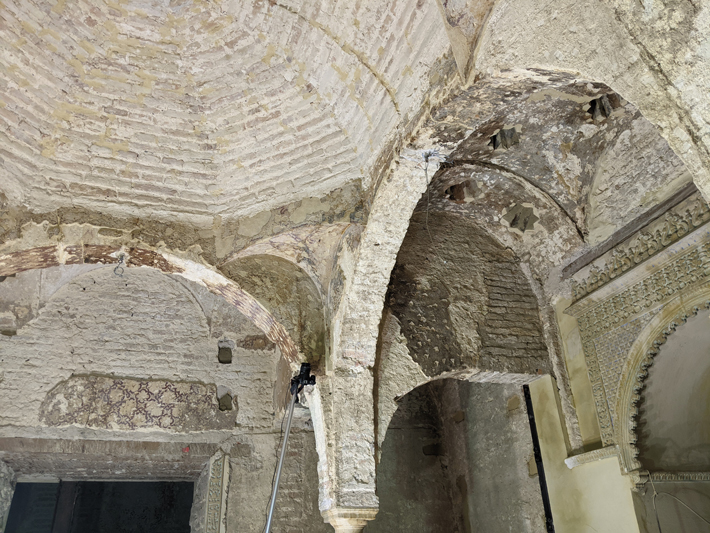 Workers renovating a popular tapas bar in Seville, Spain, were surprised to encounter the remains of an Islamic bathhouse dating to the twelfth century, when the Almohad Caliphate ruled Andalusia. Soon after construction began, the crew discovered the painted walls of the long-forgotten structure concealed behind the restaurant’s plastered walls. Covered from floor to ceiling in well-rendered red-and-white geometric designs, the ornate bath complex was also adorned with 88 skylights shaped like stars, octagons, and rosettes.
Workers renovating a popular tapas bar in Seville, Spain, were surprised to encounter the remains of an Islamic bathhouse dating to the twelfth century, when the Almohad Caliphate ruled Andalusia. Soon after construction began, the crew discovered the painted walls of the long-forgotten structure concealed behind the restaurant’s plastered walls. Covered from floor to ceiling in well-rendered red-and-white geometric designs, the ornate bath complex was also adorned with 88 skylights shaped like stars, octagons, and rosettes.
Thanks to historical records, archaeologists knew a bath complex was once located in the busy neighborhood, close to the Seville Cathedral and the city’s Great Mosque. They assumed it had been torn down centuries ago. It turns out it remains almost completely intact but was hidden from view when the building was converted into a hotel and restaurant in the early twentieth century.
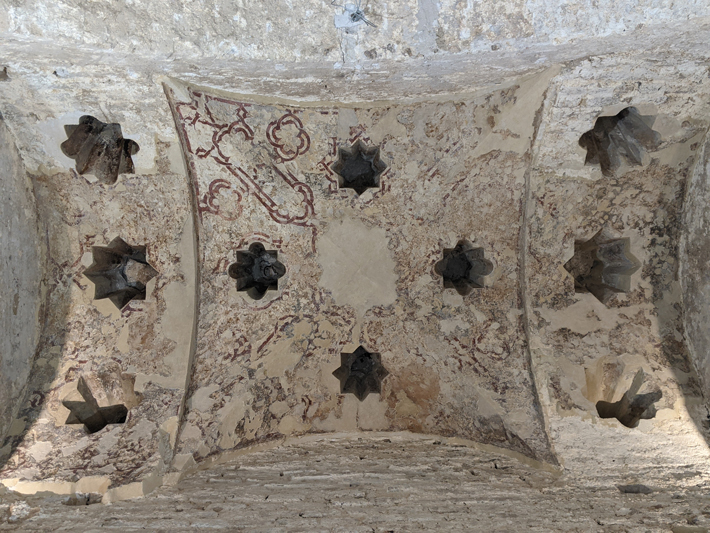
Lost Egyptian City
By ZACH ZORICH
Thursday, June 10, 2021
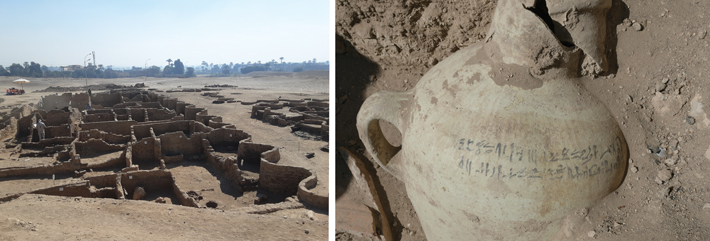
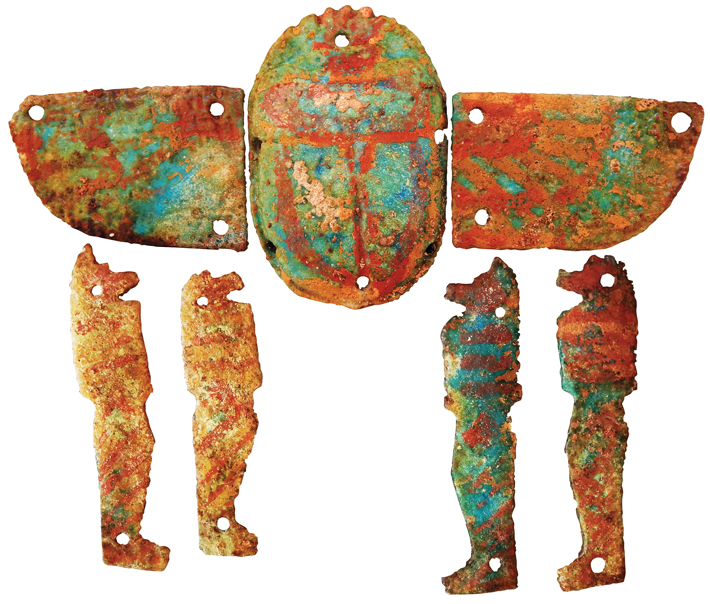 A team of excavators led by Egyptologist Zahi Hawass has uncovered the city where the people who worked in the temples of ancient Egypt’s New Kingdom–era spiritual center at Luxor lived. The city’s ancient name was “the dazzling Aten,” a reference to a newly ascendant solar god. The team found a large bakery that may have been used to feed workers, as well as an administrative and residential district that was surrounded by a zigzag wall, a rare architectural style for the time. The walls’ mud bricks bear the seal of the pharaoh Amenhotep III (r. ca. 1390–1352 B.C.), who conducted an ambitious building program at Luxor.
A team of excavators led by Egyptologist Zahi Hawass has uncovered the city where the people who worked in the temples of ancient Egypt’s New Kingdom–era spiritual center at Luxor lived. The city’s ancient name was “the dazzling Aten,” a reference to a newly ascendant solar god. The team found a large bakery that may have been used to feed workers, as well as an administrative and residential district that was surrounded by a zigzag wall, a rare architectural style for the time. The walls’ mud bricks bear the seal of the pharaoh Amenhotep III (r. ca. 1390–1352 B.C.), who conducted an ambitious building program at Luxor.
Laws of the Land
By MARLEY BROWN
Thursday, June 10, 2021
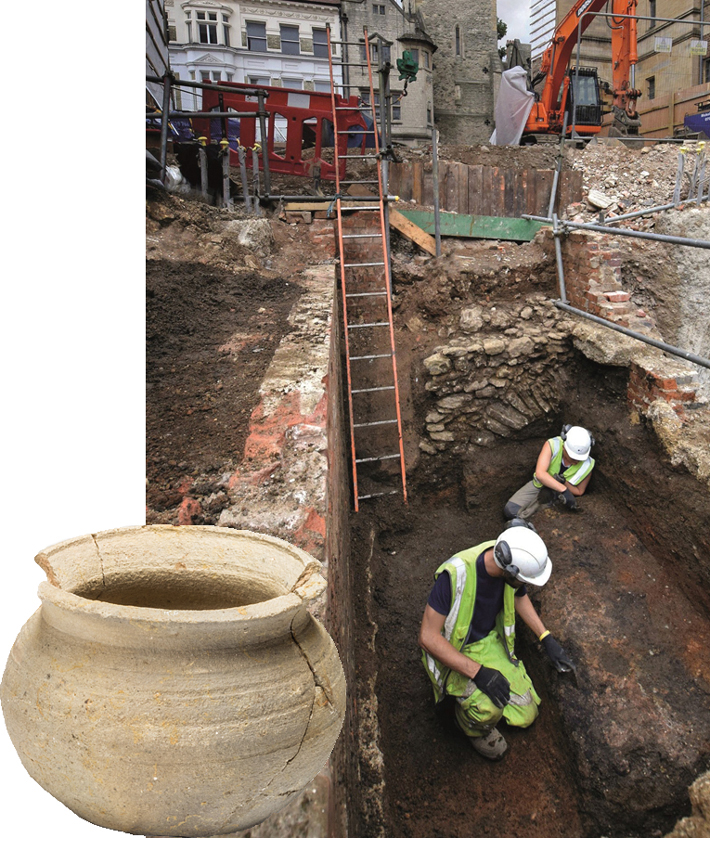 At least two families in Oxford, England, may have followed a kosher diet more than 900 years ago. Archaeologists have uncovered remnants of two adjoining houses that were owned by Jewish families in the late eleventh and early twelfth centuries, according to medieval census records. In a privy attached to the houses, researchers uncovered fragments of cookware and thousands of animal bones. A team led by University of Bristol archaeologist Julie Dunne conducted lipid-residue analysis to determine whether the families observed Jewish dietary laws. “During the period these families were living at the site, we see a total absence of pig bones and an abundance of fowl and kosher fish remains,” says Dunne. Chemical traces detected on the sherds, she adds, suggest that the vessels were used to process ruminants, including cows and sheep, but not pork or dairy products. According to Jewish dietary law, it is forbidden to eat pork or shellfish, or to mix meat and dairy products in the same container. By contrast, vessels from an earlier Anglo-Saxon assemblage recovered at the site, and those unearthed at a nearby medieval site, appear to have contained both ruminant and nonruminant animal products. This suggests the families had distinct cooking and eating habits.
At least two families in Oxford, England, may have followed a kosher diet more than 900 years ago. Archaeologists have uncovered remnants of two adjoining houses that were owned by Jewish families in the late eleventh and early twelfth centuries, according to medieval census records. In a privy attached to the houses, researchers uncovered fragments of cookware and thousands of animal bones. A team led by University of Bristol archaeologist Julie Dunne conducted lipid-residue analysis to determine whether the families observed Jewish dietary laws. “During the period these families were living at the site, we see a total absence of pig bones and an abundance of fowl and kosher fish remains,” says Dunne. Chemical traces detected on the sherds, she adds, suggest that the vessels were used to process ruminants, including cows and sheep, but not pork or dairy products. According to Jewish dietary law, it is forbidden to eat pork or shellfish, or to mix meat and dairy products in the same container. By contrast, vessels from an earlier Anglo-Saxon assemblage recovered at the site, and those unearthed at a nearby medieval site, appear to have contained both ruminant and nonruminant animal products. This suggests the families had distinct cooking and eating habits.
In the Anatolian Arena
By BENJAMIN LEONARD
Thursday, June 10, 2021
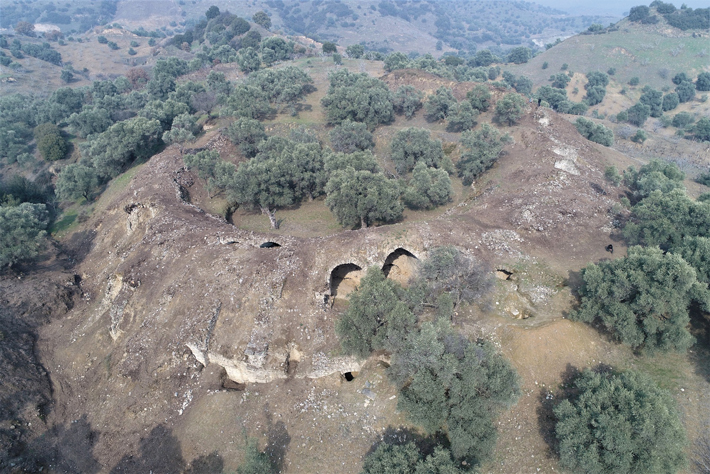
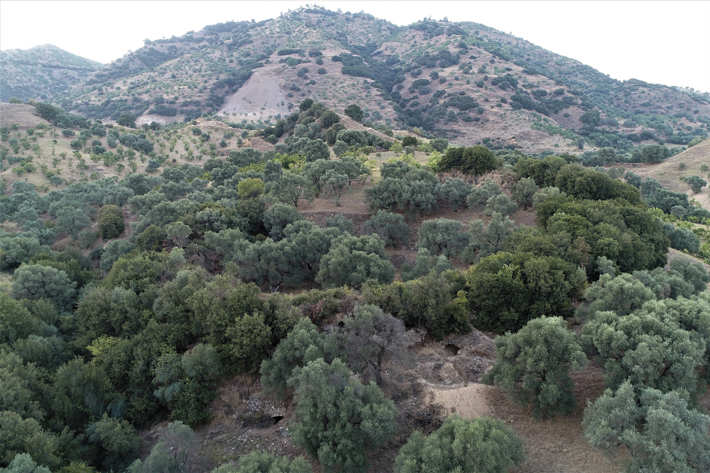 During a survey of the ancient city of Mastaura in western Turkey, archaeologists happened upon the stone arches and seats of a large Roman amphitheater, most of which remains underground. Archaeologists Sedat Akkurnaz of Adnan Menderes University and Mehmet Umut Tuncer of the Aydın Provincial Directorate of Culture and Tourism think the arena was built around A.D. 200, when the city flourished under the largesse of the Severan emperors, who ruled from A.D. 193 to 235. With an estimated seating capacity of 15,000 to 20,000 people, the amphitheater was one of the only such grand structures in Anatolia, the researchers say. It probably attracted spectators from nearby cities for the bloody gladiator bouts and wild animal fights that took place there. As at the famed Colosseum in Rome, rooms beneath the building’s outer walls likely served as waiting areas for combatants and private entertainment spaces for elite audience members.
During a survey of the ancient city of Mastaura in western Turkey, archaeologists happened upon the stone arches and seats of a large Roman amphitheater, most of which remains underground. Archaeologists Sedat Akkurnaz of Adnan Menderes University and Mehmet Umut Tuncer of the Aydın Provincial Directorate of Culture and Tourism think the arena was built around A.D. 200, when the city flourished under the largesse of the Severan emperors, who ruled from A.D. 193 to 235. With an estimated seating capacity of 15,000 to 20,000 people, the amphitheater was one of the only such grand structures in Anatolia, the researchers say. It probably attracted spectators from nearby cities for the bloody gladiator bouts and wild animal fights that took place there. As at the famed Colosseum in Rome, rooms beneath the building’s outer walls likely served as waiting areas for combatants and private entertainment spaces for elite audience members.
Advertisement
Advertisement
IN THIS ISSUE
Digs & Discoveries
A Challenging World
The Spider's on the Wall
Mirror, Mirror
Return to Sender
The Copper Standard
Red Carpet Treatment
Buddhist Retreat
Tubman's Training Ground
Anchors Aweigh
In the Anatolian Arena
Lost Egyptian City
Laws of the Land
Bathing at the Bar
Off the Grid
Around the World
Ancient Australian multi-tools, Africa’s oldest house, Neanderthal hygiene, and Viking warrior bedding
Artifact
All wonders great and small
Advertisement

Recent Issues
-
 May/June 2024
May/June 2024
-
 March/April 2024
March/April 2024
-
 January/February 2024
January/February 2024
-
 November/December 2023
November/December 2023
-
 September/October 2023
September/October 2023
-
 July/August 2023
July/August 2023
-
 May/June 2023
May/June 2023
-
 March/April 2023
March/April 2023
-
 January/February 2023
January/February 2023
-
 November/December 2022
November/December 2022
-
 September/October 2022
September/October 2022
-
 July/August 2022
July/August 2022
-
 May/June 2022
May/June 2022
-
 March/April 2022
March/April 2022
-
 January/February 2022
January/February 2022
-
 November/December 2021
November/December 2021
-
 September/October 2021
September/October 2021
-
 July/August 2021
July/August 2021
-
 May/June 2021
May/June 2021
-
 March/April 2021
March/April 2021
-
 January/February 2021
January/February 2021
-
 November/December 2020
November/December 2020
-
 September/October 2020
September/October 2020
-
 July/August 2020
July/August 2020
-
 May/June 2020
May/June 2020
-
 March/April 2020
March/April 2020
-
 January/February 2020
January/February 2020
-
 November/December 2019
November/December 2019
-
 September/October 2019
September/October 2019
-
 July/August 2019
July/August 2019
-
 May/June 2019
May/June 2019
-
 March/April 2019
March/April 2019
-
 January/February 2019
January/February 2019
-
 November/December 2018
November/December 2018
-
 September/October 2018
September/October 2018
-
 July/August 2018
July/August 2018
-
 May/June 2018
May/June 2018
-
 March/April 2018
March/April 2018
-
 January/February 2018
January/February 2018
-
 November/December 2017
November/December 2017
-
 September/October 2017
September/October 2017
-
 July/August 2017
July/August 2017
-
 May/June 2017
May/June 2017
-
 March/April 2017
March/April 2017
-
 January/February 2017
January/February 2017
-
 November/December 2016
November/December 2016
-
 September/October 2016
September/October 2016
-
 July/August 2016
July/August 2016
-
 May/June 2016
May/June 2016
-
 March/April 2016
March/April 2016
-
 January/February 2016
January/February 2016
-
 November/December 2015
November/December 2015
-
 September/October 2015
September/October 2015
-
 July/August 2015
July/August 2015
-
 May/June 2015
May/June 2015
-
 March/April 2015
March/April 2015
-
 January/February 2015
January/February 2015
-
 November/December 2014
November/December 2014
-
 September/October 2014
September/October 2014
-
 July/August 2014
July/August 2014
-
 May/June 2014
May/June 2014
-
 March/April 2014
March/April 2014
-
 January/February 2014
January/February 2014
-
 November/December 2013
November/December 2013
-
 September/October 2013
September/October 2013
-
 July/August 2013
July/August 2013
-
 May/June 2013
May/June 2013
-
 March/April 2013
March/April 2013
-
 January/February 2013
January/February 2013
-
 November/December 2012
November/December 2012
-
 September/October 2012
September/October 2012
-
 July/August 2012
July/August 2012
-
 May/June 2012
May/June 2012
-
 March/April 2012
March/April 2012
-
 January/February 2012
January/February 2012
-
 November/December 2011
November/December 2011
-
 September/October 2011
September/October 2011
-
 July/August 2011
July/August 2011
-
 May/June 2011
May/June 2011
-
 March/April 2011
March/April 2011
-
 January/February 2011
January/February 2011
Advertisement






